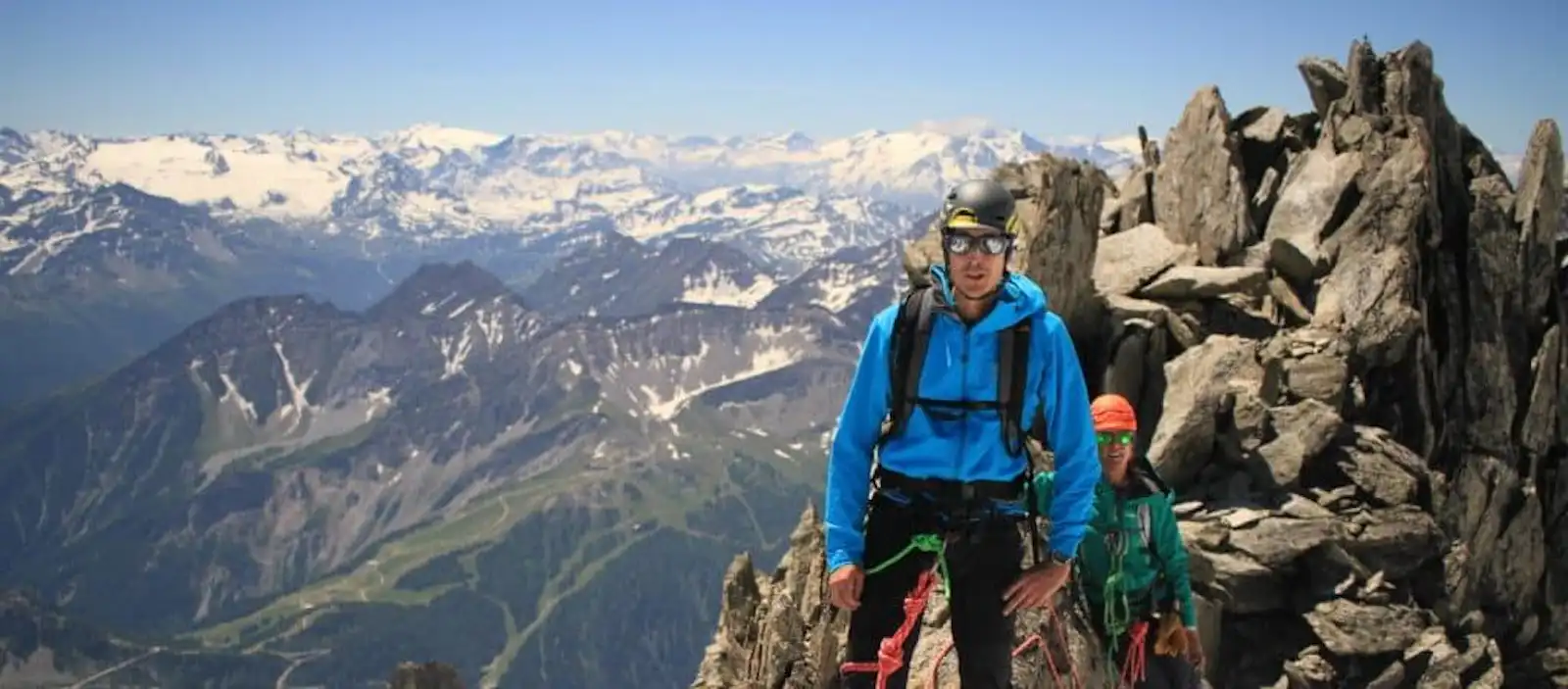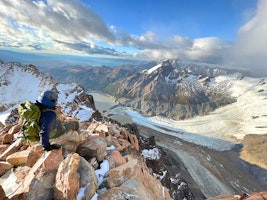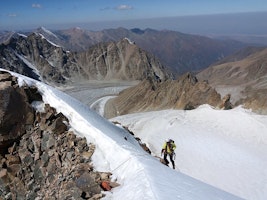Alpine Climbing is the sport of ascending the rock faces, walls, and crags of a mountain to reach its summit. This is a popular type of rock climbing that uses the natural geologic features of mountain terrain. It is common to involve rock, ice, or mixed climbing. There are many forms, including free, aid, and big wall climbing. As alpine climbing has become more common over the years, sport climbing has also sprouted up in iconic locations.
It has been gaining notoriety across the world, with many thrill-seekers, travelers, and adventurers joining the high altitude sport. The summit objective of alpine climbing makes it an attractive activity for people who want to experience well-known destinations in an immersive and hands-on way. More than just rock climbing, it takes the adventure to the next level and rewards its participants with rare vistas and evocative panoramas.
It combines fundamental rock climbing techniques with basic mountain features for dynamic ascents. Alpine climbing can also be absorbed into a greater mountaineering expedition that can feature ice climbing and glacier traversing. This activity necessitates a high level of physical fitness, focus, and awareness. Many climbers slowly build up their skills on easier peaks and work their way towards more ambitious goals. Experts are known to take on some of the tallest peaks in the world.
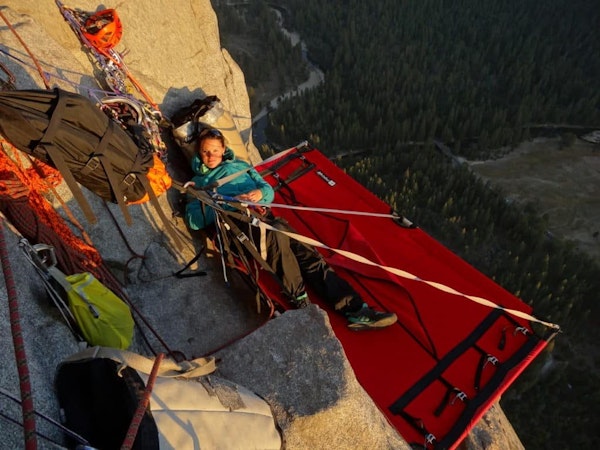
A night on a portaledge with the setting sun. Photo: Julia Virat.
An alpine climbing expedition can be a short trip covering an afternoon, or it can be an immersive journey to the heart of the mountains. Some big wall trips require multiple days scaling the rock and can even include spending a night on a portaledge. This means there are routes for every level of climber that can accommodate many different types of trips.
Types of Alpine Climbing
Alpine climbing comes in many forms, and all have their own specific requirements and techniques.
Free Climbing
Free climbing uses safety equipment without aiding the climb. Slings, belays, ropes, and other equipment is used to diminish risks, but not to assist in the progress of an ascent.
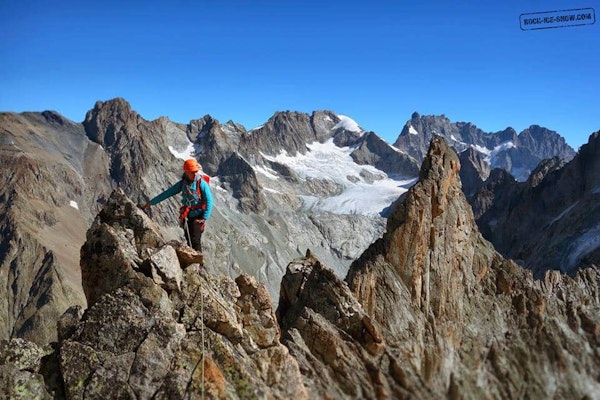
The jagged tops of Les Hautes Alps. Photo: Sebastien Foissac.
Aid Climbing
This discipline uses those safety items (ropes, belays, etc.) to help a climber make it to the top. These routes are most common in places where free climbing is next to impossible, though aid climbing can be practiced almost everywhere.
Clean Climbing
This type of alpine ascent involves removing the protection equipment while progressing up the rock. The equipment itself has developed over time to help maintain healthy rock and prevent permanent damages. Climbing with pitons (metal spikes for anchoring), for example, is more harmful to the rock, so it has been replaced with more mountain-friendly equipment techniques.
Big Wall Climbing
Big wall climbs consist of sustained ascents up long routes, often necessitating an overnight or more on the route. Many of the popular locations for alpine climbing have big walls climbs that have intriguing challenges and lengthy, heart-pumping obstacles.
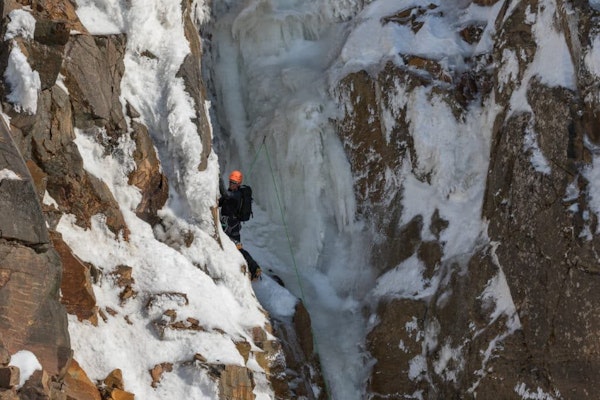
Ascending the Kamihoro Couloir in Hokkaido. Photo: Takao Miyashita.
Sport Climbing
While alpine climbing has gained momentum over the years, sport climbing has also increased. It is the use of permanent anchors along climbing routes, as opposed to removing the equipment as you climb.
Equipment
Much like rock climbing, alpine climbing has a basic set of essential gear that will get you to the top of the mountain. It will also feature the necessary tools for an ice climb. The basic equipment needed for a successful alpine climbing program will include:
Helmet
Harness
Ropes
Belay device
Carabiners
Slings
Nuts and camming devices
Quick draws
Climbing shoes and/or mountaineering boots
Ice Axe
Crampons
Other equipment, such as tents and camping gear, is required if you plan on spending an evening on a portaledge or if you are camping during your excursion. Avalanche safety equipment is also required for more perilous climbs.
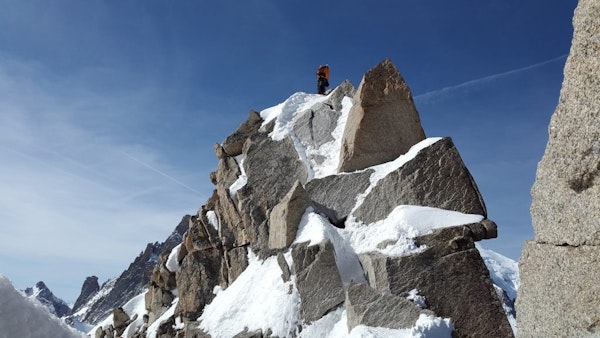
The incomparable and immense Mont Blanc massif. Photo: Kyriakos Rossidis.
Best Season(s)
Alpine climbing is enjoyed year round, though there tends to be more hazards and dangers associated with climbing in winter. The late spring and summer offer the best times for alpine climbing trips. The weather is usually more accommodating and pleasant, so ascents are more comfortable during these mild months.
The weather becomes more volatile as the season changes to autumn and winter. These alpine climbing trips may require additional safety preparation and equipment, stressing course selection, navigation, and climbing fitness. Alpinists with a passion for challenging ascents often look to test their mettle on the rock during these adverse conditions.
Why should you hire a guide for an alpine climbing trip?
Taking a guide on an alpine climbing trip is the best way to safely enjoy your program. A knowledgeable companion will make sure you are properly practicing safety procedures and maintaining a low-risk atmosphere, so you can focus on the ascent itself. Its easier to take your program to the next level when you know someone has your back.
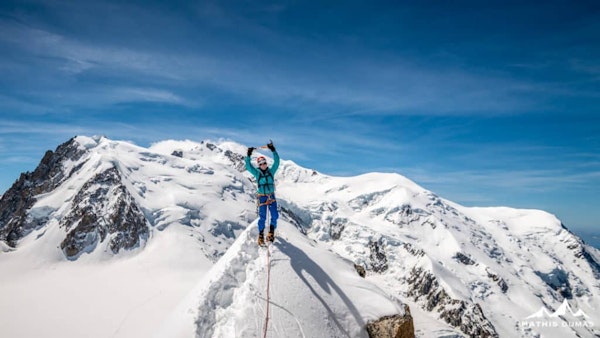
Reaching the top of the Arete des Cosmiques. Photo: Mathis Dumas.
A guide will also allow you to appreciate the fun aspects of your climb, providing local secrets, bits of wisdom, and general assistance on your way up the mountain. You can focus on unforgettable views, enjoying your journey, and accomplishing your goals. You increase your chance for a successful climb tenfold, so hiring a guide is a vital part of any alpine climbing program.
Top Spots
French Pyrenees – Pyrenees National Park is in the sweet spot high above France, snuggled next to Andorra and Spain. Its big wall climbs are particularly delightful, and it offers routes for every level of climber.
Swiss Alps – The Swiss Alps need no introduction. Made predominantly of limestone, its tall peaks are easily accessible and a delicious goal for climbers and mountaineers.
Scotland – Alpine climbing in Scotland is known for the Cuillin Ridge, and “bagging the Munros” is the ultimate goal. While the peaks aren’t particularly tall, they still require the skill and ability necessary for a profound climbing trip.
Slovak High Tatras – With pristine lakes dotting its valleys and vast countryside, Slovakia has aesthetics more than covered. The High Tatras are symbolic for the country and conquering an alpine climb here will earn you immediate respect.
Dolomites (Italy) – Cima Piccola and the rest of Tre Cime de Lavaredo have iconic ascents in the classic Italian region, making for a perfect alpine climbing getaway. Alpinists in search of historically significant routes will also be rewarded.
Julian Alps (Slovenia) – Triglav stands out in these mountains, but there are plenty of scenic climbs with heart-melting panoramas. Developing alpine skills here is a surefire way to prepare for other bucket list climbs.
Canada – When it comes to wilderness, Canada is in a league of its own. The Rocky Mountains in the west have shale and limestone crags that are perfect for memorable ascents, complimented by the coastal views of the aptly named Coast Mountains.
United States – From the ancient Appalachians to the indomitable Rockies, the United States is quickly becoming a full-service climbing destination from sea to shining sea. Check out the red rock formations in Utah and Nevada for a rare geological treat.
